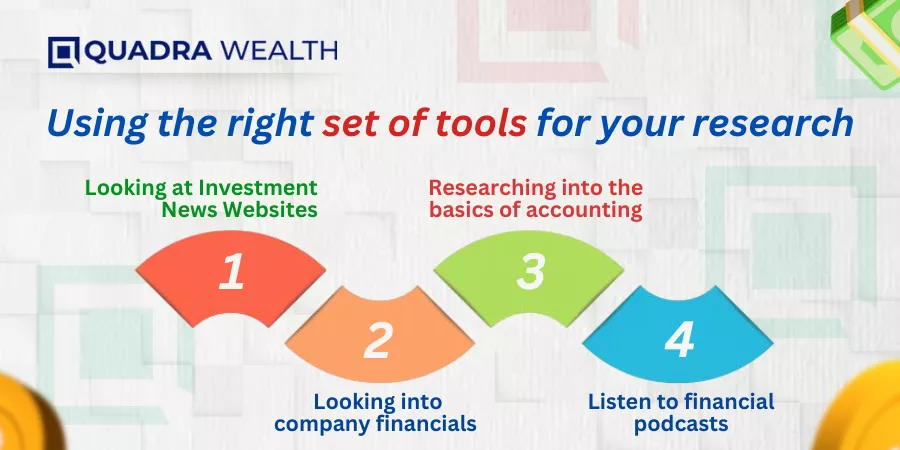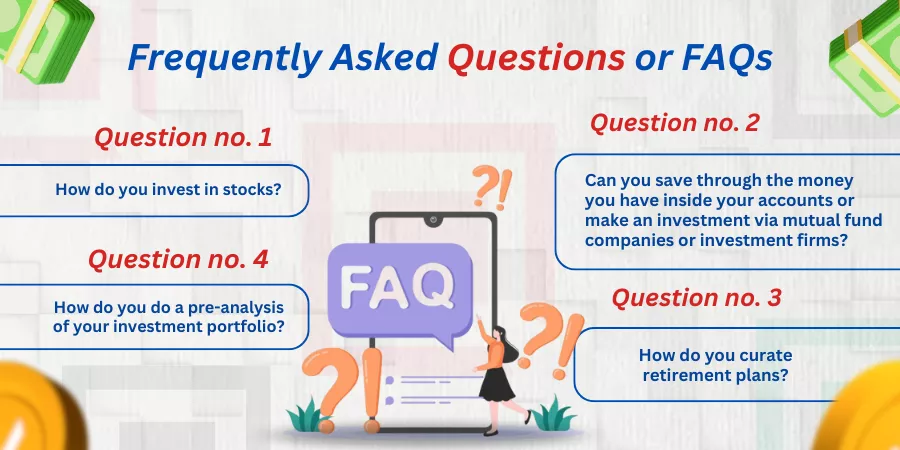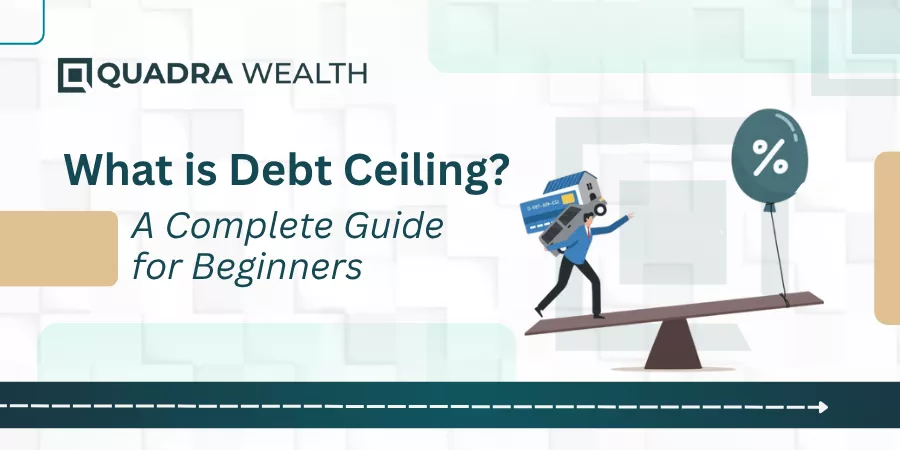Introduction
As a newbie investor, you may not have fair knowledge on how to dabble with shares or delve at the stock markets. Investing in shares, commodities, or futures or choosing to work without a broker can be overwhelming and daunting for you.
As a novice investor who would love to learn how stock markets work and play with a minimum investment amount that you actually own, getting started in the stock market on your own might not be a bad idea at all. Yes, a few of your moves might be wrong, and you may lose some money out there. However, you must consider this as your learning phase.
The more mistakes you make in the stock markets, the better you are going to get with the nuances of trading. On this parlance, let us identify simple tips and techniques on How To Invest In The Stock Market On Your Own.Helping you get started further on the same:
Understand your financial goals
You must understand what your financial goals are. You must check whether your investment goals are able to help you accomplish your short-term, medium-term, and long-term financial goals or not. And, for the investment plan you undertake, how much of dispensable funds do you have to get things rolling?
Above all, would you be able to undertake risks with respect to certain investment options? If yes, how much risk are you willing to take? We call it risk tolerance in investment parlance, and you must check for yourself as to what your risk tolerance ratio is.
Knowing the why, what, when, and how, you call it the W-H technique. This will help you understand the purpose and goal of your investing direction.
What is the platform you are planning to choose?

You must choose the right online platform that helps you choose investments, and you bid your brokerage fees, too. With robo-aided software, you may have to shell out a very negligible fee for the brokerage involved while you buy or sell shares. Here, we have a rundown of points that can help you get started on your own:
A- Using a simple UI design platform
You can choose a simple, non-fussy UI platform wherein this would be like a plug-and-play software to help you get started on a hassle-free note indeed.
B- Choosing reputed software for more seasoned investors
You may be a more seasoned investor and not be a novice or amateur investor after all. Here, in this case, you would need a more reputable online platform you would want to partner with. Choosing platforms like Fidelity or Charles Shwab provides more enriched features for you to trade like a seasoned pro.
C- Looking for more advanced features
You want to keep your setup cost effective while at the same time you are looking for a platform that is tech savvy and powerful for you to try those powerful nuances of investing and trading. Here, is when, you look for trendy e-commerce platforms like E-trade, TD Ameritrade, or other powerful platforms that have more embedded and rich features like allowing you to place stop losses, view charts and do more of trading operations seamlessly.
D- Have you tried Robo Trade?
Today’s Gen Zees know how to do Robo trading at the slip of their fingers indeed. You just have the platform uploaded on your laptop or via your i-Pads. And that is it. Everything else is taken care of in a seamless fashion indeed.
You have robots or chatbots that view market movements and look into the upswings or downsings of prices of different shares or stocks that are included in the Fortune 500 indices. The charts are analyzed by these chatbots, too. Based on AI findings, you get instant recommendations on what shares to buy or what shares to sell and how much stop-losses you add for futures or commodities to avoid incurring capital losses.
Platforms like Fidelity Investments, ROBIN, Meriyll Edge, Interative Brokers LLC, and TradeStation are some of the big banners in providing investors with completely automated trading platforms wherein you buy/ sell shares at the click of a mouse.
Helping you understand the basics
You must understand the basics of how the stock exchanges work or operate. You must know how terms are used across investment platforms or equity markets. Educating yourself with the glossary terms that are predominantly used at equity markets or global stock exchanges is what you must familiarize yourself with.
Let us have a rundown into some of the glossary terms that are used across stock exchanges:
- Shares/ Stocks- Denominations of shares or stocks indicate your ownership in a company
- ETFs- Also known as Exchange-Trade Funds, these refer to a basket of equity assets like stocks, bonds, securities, shares and commodities. Having a basket of portfolios can help you build wealth generation portfolios on a more sustainable note indeed.
- Bull Market: A market trend that indicates rising prices of stocks and shares of different companies
- Bear Market- A market trend that indicates falling prices of stocks and shares of various enterprises
- Dividends- The profits of the company is divided amongst all the share holders and distributed as dividend payouts to investors as such.
- Market order vs. limit Order: Helps you decide what to buy/sell
Build a simple starter strategy
As a newbie investor, you can build a starter strategy with low investment options. Here are three simple ways for you to accomplish the same. Helping you get started here:
A- Invest in index funds or block funds
You can take index funds that are put together inside a basket. Say, like your Nifty 50 or S&P 500. The top 50 or 500 stocks are grouped inside the index basket. You can also look for ETFs. This way, you have a more diversified investment portfolio that can help beginners get a go at it.
B- Blue-Chip Stocks
You can choose blue chip shares that are doing fairly well in the market and show equitable growth. This way, your investment portfolios can also grow at a steady pace indeed.
For instance, investing in Apple shares or Meta (Facebook) can help you get stable dividends or coupons on the stock portfolio.
C- Dollar Cost Averaging
You can buy a certain number of shares or stocks using a fixed source of income, and you can keep buying these shares month on month. You can utilize your dispensable reserves to help you invest in these shares or stocks regularly. You can allow these shares to increase without putting market timing or tabs on when to buy or sell. This way, your investment portfolios can grow at a slow and steady pace indeed.
Using the right set of tools for your research

You must use the right set of tools for performing your research. Here are three interesting and exponential ways on how you familiarize yourself with the updated trends in the world of investments and finances.
Helping you through with a rundown into the same:
A- Looking at Investment News Websites
You can check for the latest trends you might want to know in the field of Investments. Log in to Yahoo Finance, MorningStar, and Alpha to learn the latest nuances of how stocks perform and what the latest trends in the stock markets are that can help you leverage your investment portfolios exponentially.
B- Looking into company financials
You can visit random websites of companies that are truly performing well in the market. Learn more about their profit ratios or look for if they have locked-in new amalgamations or mergers with few other entities. This way, you would learn more about how to pick stocks of well-doing firms over the mediocre ones.
C- Researching into the basics of accounting
You must get an overview of how accounting terms work. You must be able to read balance sheets of enterprises and learn how much profits they have earned for the entire financial year or across different quarters of the year. Learning more about revenues, profits, and debts helps you analyze how an enterprise has grown over the years.
D- Listen to financial podcasts
You must listen to financial podcasts to further understand how business or financial analysts opine inside manufacturing or service-oriented firms. Furthermore, you can understand how different stocks perform inside stock exchanges or equities worldwide.
Stay consistent and do not aim for perfection
You must review your portfolios once every 6 months or so. Reinvesting dividends will help you compound interest rates over long-term financial portfolios. Leaving the capital untouched can help you reap the maximum investment benefits at the time the portfolios are up for redemption.
Avoidance of Rookie mistakes helps you stay above waters inside the world of investments and finances
Firstly, do not aim to invest money in any kind of portfolio if you would want to redeem funds at the earliest. Putting your corpus funds into portfolios and leaving your capital vault untouched is going is going to allow your investment portfolios or interest rates compound exponentially.
Secondly, you must not follow tips blindly. You must customize your do’s and don’ts according to the investment portfolios you have in hand after analyzing what your risk tolerance ratios are.
Finally, do not ignore fees or taxes that may apply while you start and redeem your investment plans. You get your money post deduction of fees and taxes.
Final Thoughts
You must open a brokerage account and be in a position to fund the same. Then, you can upload an investment portfolio, as you are going to get started on your own. Finally, read the offer documents carefully before you enter into a partnership with a financial or investment firm online or offline.
Frequently Asked Questions or FAQs

How do you invest in stocks?
Answer: You must open a Demat account or open a brokerage account and fill in your basic credentials. You can invest in stocks with the minimum principal amount you have. A KYC procedure with your ID and Address proofs would be carried out as well.
Can you save through the money you have inside your accounts or make an investment via mutual fund companies or investment firms?
Answer: The money you park inside your savings account can get eroded through inflation. You must choose to invest via mutual funds, ETFs, or stable performing stocks to help your investment portfolios grow. You can select the right investment options if you have a robust investment cum financial plan in place.
How do you curate retirement plans?
Answer: You must choose a time frame or horizon-based investments wherein the returns compound over a longer duration of time. You can choose stocks that provide tax benefits, and then you, too, can become a tax-advantaged investor with more to gain and less to lose out on.
How do you do a pre-analysis of your investment portfolio?
Answer: You must know the type of account you would want to deal with. You must analyze expenses like fees involved or brokerage remuneration that can deduct a portion of your investment earnings. As performance is no guarantee for equities due to the volatility, you must deposit into stocks or trading accounts after analyzing the type of investment products that go into your wealth generation baskets. Then, you register into the requisite investment program that can guarantee you with a promising financial future indeed.






